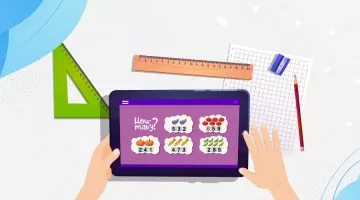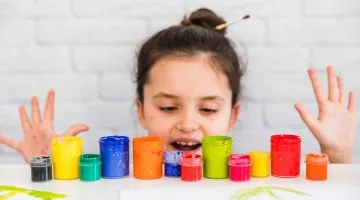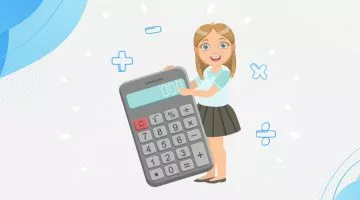Math in the Real World
reviewed by Jo-ann Caballes
Updated on September 26, 2024
If your child doesn’t like to solve algebra or geometry problems, it’s time to show them why we need math in the real world. This knowledge will benefit them even if they choose art as their profession.
Motivate your child with the best real-world problems in math to show them why they need it. Use our free worksheets to boost your child’s math skills on your own, or get the help of Brighterly tutors to fasten grasp of the math curriculum.
Why is math important in the real world?
Math is important in the real world since it permeates every aspect of our lives. We use it everywhere: from shopping and cooking to engineering and transportation. Here are a few ways how math can benefit student’s life:
- Increased logical thinking
- New career opportunities in STEM field, business and finance.
- Daily usage in shopping and goods measurement.
- Time management.
Using math in real life equips us with the skills needed to navigate the complexities of the modern world, solve problems effectively, and achieve our goals.
How is math used in the real world?
Math is used in every real-world interaction, whether it is human-human or human-tech. We need it everywhere, from measuring ingredients while making food to calculating satellites to providing GPS, TV, and the internet.
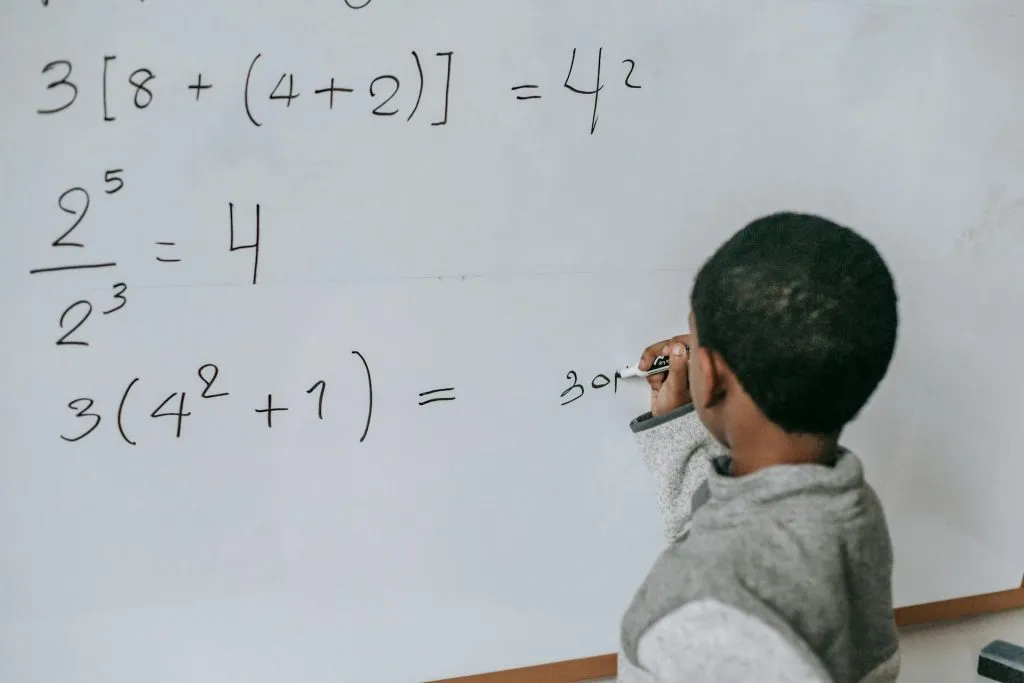
Math for the real world can be used to calculate discounts and sales taxes during shopping or while cooking to follow proper timing. It is crucial for money management. You need it to calculate salary and rates and track expenses. If your kid wants to open a business when they grow, they will need to learn math to pay salaries, cover manufacturing costs, and still have a return on investment.
Teach your child how math is used in real life in Brighterly
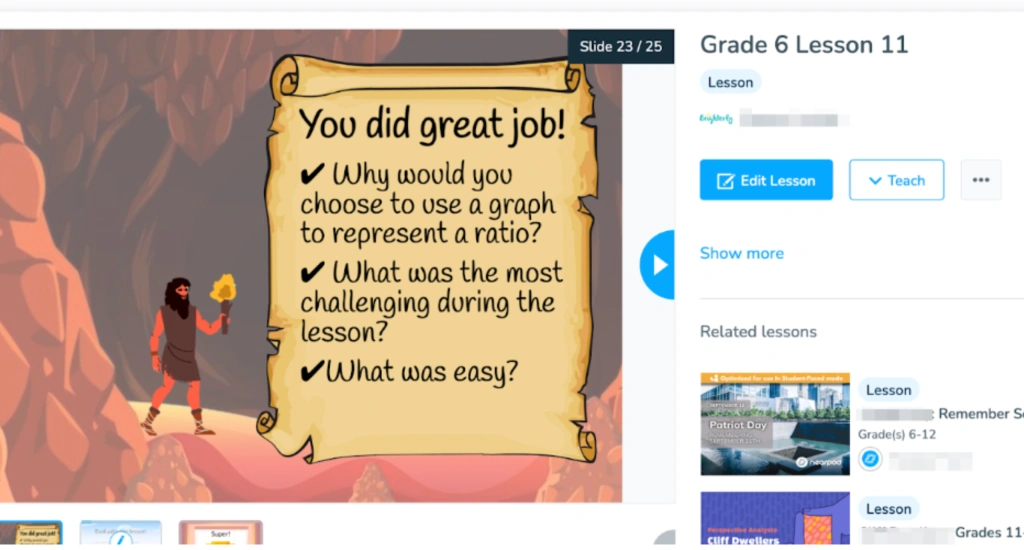
Math is used in all real-life activities, and Brighterly tutors will show it even to the most humanitarian child. We offer personalized tutoring sessions, where our tutors create a syllabus and math problems tailored to the child’s interests.
Brighterly tutors can show your child how to use math in any daily activity. We will show your kid practical math applications in real life and how to use them properly.
We will be next to your child to ensure that they understand the logic behind any task. Our tutors will encourage your kids to become a better version of themselves by becoming confident in every action.
Brighterly tutors provide positive reinforcement and encouragement to help your child build confidence in their math abilities. We provide personalized support and guidance to help your kid overcome any challenges they may face.
When is math used in real life?
- Personal finances
- Business tasks
- Time and operation management
- Healthcare
- Interior and exterior design
- Art and music
- Recreation purposes
Note: Math is the invisible thread that connects and supports all aspects of our lives. That’s why there are countless real-life math examples. So, if your child doesn’t like calculations but has some hobbies, it is still possible to encourage them to learn this STEM discipline.
5 Real-world math examples
Groceries
Shopping is the most common math application in real life. You need to calculate your grocery budget and find out which products benefit you more. When you see a “20% off” sale, you find 20% of the original price and then subtract that amount. For example, if a soy milk pack originally costs $30, 20% of $30 is $6. So, the sale price would be $30 – $6 = $24.
If you want to buy all you want, you need to plan your budget ahead
Real-life math examples include estimating the unit/pound price. For example, if a 10-ounce bag of chips costs $2.50, the unit price is $2.50 / 10 ounces = $0.25 per ounce. Later, you can compare it with other snacks to find the best option.
Baking
Cooking is another situation where you need basic math skills for everyday life. Here, you need to measure food and liquids and convert them into different units to achieve the best results.
To ensure that you can cook a tasty food, you need to measure ingredients properly
For example, a recipe might call for 1/2 cup of flour to make 4 portions. Meanwhile, you need to make dinner for a company of 8. Using simple math, you can calculate that you need a whole cup of flour.
Driving
Each second of driving is full of practical math examples. Drivers need to calculate their speed, acceleration, and break distance. They must compare their speed with other drivers to ensure they drive relatively fast yet safely. Drivers need math to calculate when they’ll get to the destination with speed limits down the road.
It’s not fancy to stop in the middle of the road because the car has no gas. So, drivers should be kings of estimations
Car owners need to know math well to calculate fuel efficiency. Even EV owners need to determine the distance between charging and calculate where to charge their cars while staying within budget.
Finance
Finance permeates each iteration, so it’s one of the most common ways we use math every day, even to the kids. Even the smallest child needs to calculate whether they have enough pocket money to purchase their favorite snack.
Once older, people need to calculate different aspects of their being, from home budgeting to mortgages and business accounting. One of the most common adult-world real-world math problems is to calculate interest on loans or savings. Many people in finance use math to calculate compound interest or decide whether some risky investition worth it.
Accounting your own finances can be boring, but it allows you to book cool vacations
Correct budgeting is another common example of mathematics in everyday life. This process involves adding up your income from various sources and subtracting your housing, food, transportation, and entertainment expenses.
Construction
Construction workers have various math applications in their work routines. They use it to measure lengths, angles, and building areas to ensure the building’s structural integrity and functionality.
Even BBQ needs to be adequately constructed and built
Also, even the best architect teams need proper time management to meet deadlines and ensure the best possible resource utilization. For example, a construction project manager might use a Gantt chart to visualize the project’s timeline and potential bottlenecks.
10 uses of math in our daily life
- Shopping
- Cooking
- Time management
- Money management
- Technology
- Sports
- Games
- DIY projects
- Health and fitness
- Photography
Shopping
Math is crucial for shoppers. As we said, one of the most common real-life math applications is to find discount profitability. Imagine that you need to buy Christmas gifts for your family and see an interesting discount: “Buy a tablet and get 15% off. If you buy 3 accessories, you’ll get 20% off for a tablet”. So, if your tablet costs $400 before the sale, here are your calculations.
Note: The initial 15% discount will be $60 since (400/100)*15= 3,5*15=52.5..
If you buy the 3 cheapest accessories for $25 each, you’ll spend $75 on them. Meanwhile, your tablet will be just $70 cheaper since 3,5*20=70. So, you will spend in this shop $355 dollars, which is even slightly more than you expected at the beginning.
If your child wants to have as many bags as Alicia Silverstone’s character, they should know a shopping math
To ensure that no one can trick your child with percentages during a shopping spree, download Brigherly’s free percentage worksheets. Our tutors can also teach your child math so your kid will become a percentage master.
Cooking
Cooking is another example of math in the real world. Recipes often call for precise measurements of ingredients, such as cups, teaspoons, and grams. Different cooks use different measurement systems: ounces, spoons, grams, etc. To cook the perfect food, you need to properly convert it to ensure perfect accuracy.
If your child doesn’t want to burn the food, they should estimate the proper amount of ingredients and timing
Many European cookie recipes say you need 500-600 grams of flour to make 35 cookies. But how much is it in cups or libra pounds? What will happen if you put in 500 lbs of flour? Do you need to buy a flour bag in Costco just to make a few dozen cookies?
Note: To properly convert it, just use a simple formula where 1 g = 0.0022 lbs. So, if your child wants to find how much flour they need, they should convert grams to pounds: 600*0,0022 = 1,32 lbs of flour.
Time management
Time management is a vital skill for anyone. That requires advanced real-world math. During this process, you use real-world math to create a perfect schedule to meet the project’s needs. Your child will need to prioritize different tasks, set deadlines, and track progress on the timeline. All these actions require math knowledge and logical thinking.
If a child understands time management at school, they will set precise deadlines once they are older
Money management
Money management is another vital activity. It is more than just a budgeting. With proper money management skills, your child can start to invest even during middle school. Just ensure that they understand ratios and proportions.
Your child can use spreadsheets to record their income and expenses. They will understand how math is used in everyday life since they use all basic operations during budgeting.
Initially, they start with small pocket money, which later can grow to the huge business expenses
Here is an easy task for elementary students: they need to find out how many months they need to save money to buy a new iPhone worth $800. They get $70 of pocket money every week. While a kid spends $30 on snacks, they still have $40 left. Let’s calculate how many weeks a child will need to get the phone:
x=800/40
x=20
With proper money management, a child will need 20 weeks (or almost 5 months) to get a new phone.
If you have a mid-school or high-school child, teach them how to calculate the profitability of different investments and pick the best loans. These examples of math in the real world will definitely benefit them during adulthood.
Technology
To use modern technology, your child should know the basics of real-world math. Other, more complex usage cases are coding, graphic tools, teaching small machine learning bots, and learning cryptography basics.
For instance, if your child likes to draw, they need to know geometry basics to use common graph tools like Procreate, Adobe Illustrator, or Photoshop. If they like vector drawing, they need to know how to draw different figures using only lines, circles, and curves.
Modern artists should know math to draw in digital tools
Suppose your kid wants to develop computer games. In that case, they will need to use math-in-the-world rules to calculate game physics, create a decision-making process, profitability maps, etc.
Sports
Sports offer a fun and engaging way for children to use interesting math applications. Students can use it to score and estimate averages per game. Math knowledge also benefits them when they collect statistics, measure distance, or calculate speed.
A sound mind in a sound body. And knowledge of how to use math in sports benefits a child’s health in the long run
Children can use probability to make strategic decisions, such as choosing the best shot in basketball or the best play in football. They can use mathematical problem-solving skills to develop strategies for winning games.
Games
Games can teach your kid how to solve various real-world problems, teach math rule usage, and even teach your child physics. For instance, Tetris can teach spatial reasoning, while Monopoly shows them the importance of planning. At the same time, Minecraft can act like a physics lesson session for elementary school students.
Tetris is a favorite game of adults who buy too much at Costco trip
DIY projects
DIY projects are a fun way to solve real-world problems in math. To build something from scratch, they will often need rulers or measuring tape and shape knowledge. For instance, if they decide to build a pyramid from random Lego blocks, they need to calculate how many pieces they need for each step. Otherwise, their building will eventually fall.
Simple DIY projects also require a lot of calculations
Even the simplest DIY projects require time and money management skills, as your kid needs to purchase components beforehand and have time to make their plans come true.
Health and fitness
Your child also needs math in health and fitness activities. They can count their calories and macroelements to get a healthy diet. Mid and high school students can calculate their BMI and body fat percentage. It also helps them to fight their complexes, as healthy indicators are higher than social media tries to project to youngsters.
No one wants back pain. And using math during exercises will help your child prevent overload from a young age
Even kids need to know how to find a healthy target heart rate zone and stay in it. Math used in everyday life is a great way to keep their body healthy and mind sharp.
Photography
Photography is a blend of art and science, and math plays a crucial role in capturing the perfect shot. To make a great photo, a child needs to know about exposure and its relationship with aperture, shutter speed, and ISO. Other tech parts that they need to know are depth of field and focal length.
Even the youngest photographers need to understand math-related rules of composition, like the golden ratio or the rule of thirds. To ensure that they have enough light, a student should understand light color and intensity.
Photographer is an artist, mathematician, and therapist rolled into one
So, despite photography being known as an art hobby, it needs a lot of mathematics in everyday life. And it’s great for you as a parent who wants to be sure that your child succeeds in STEM disciplines.
Real-world math problems
If you want to provide your kid with some real-world math problems, try to discuss some easy situations. To ease your life, we’ve gathered them in a simple table.
| Situation | Possible math problems |
| Calculating discounts during shopping | If a shirt is originally priced at $25 and is on discount of 17% off, what is the sale price? |
| Comparing prices | Which is a better deal: a 12-ounce package of cereal for $3.50 or an 18-ounce package for $5.25? |
| Scaling recipes | If a recipe calls for 2 mugs of flour to make 18 cookies, how much flour is needed to make 32 cookies? |
| Converting units | How many pounds are in 640 grams of flour? |
| Calculating fuel costs | If your car gets 40 miles per gallon and gas costs $3.25 per gallon, how much will it cost to drive 200 miles? |
| Time zones | If it’s 4:23 PM in Paris, what time is it in Los Angeles? |
| Calculating interest | If you borrow $390 at an annual interest rate of 5%, how much interest will you owe after one year? |
| Budgeting | If you have a monthly income of $2604 and your expenses are $1930, how much money can you save each month? Will it be enough to get a mortgage if you pay $1250 for your current rent but will pay $1629 for a mortgage? |
| Calculating volume | If you need to fill a fish tank that is 3 feet long, 2 feet wide, and 1.5 feet deep, how many gallons of water do you need? |
Conclusion
Math plays a crucial role in our daily lives. By understanding where math is used in real life and how to apply it, people can effectively solve even the most complex life problems.
Brighterly tutors can help your child develop a strong foundation in math by providing personalized instruction and focusing on real-world applications.
Don’t wait! Book your child’s first free tutoring session today to see how Brighterly can help them succeed in math.





